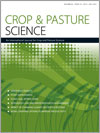CP13311Responses of old and modern cereals to CO2-fertilisation
Old crop cultivars may be better adapted to climate change than recent cultivars and profit more from the CO2 fertilisation effect. The aim of the study was to screen the responses of a large number of ancient and modern cereals to a greater availability of CO2. In most of the tested cereals, we found a significant increase in seed biomass and a reduction in nitrogen concentration, but seed quality was maintained in some old cereals.




